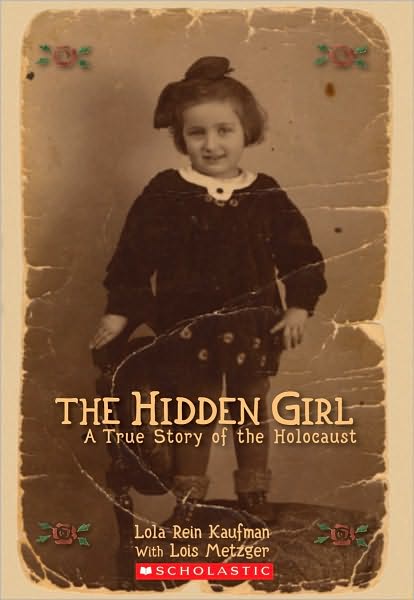
The Hidden Girl: A True Story of the Holocaust
Sunday to Thursday: 09:00-17:00
Fridays and Holiday eves: 09:00-14:00
Yad Vashem is closed on Saturdays and all Jewish Holidays.
Entrance to the Holocaust History Museum is not permitted for children under the age of 10. Babies in strollers or carriers will not be permitted to enter.

The Hidden Girl: A True Story of the Holocaust
The Hidden Girl: A True Story of the Holocaust
By Lola Rein Kaufman with Lois Metzger
Troll Associates, 1999
97 pages
This short testimony is fitting for middle school students who have studied the Holocaust and are prepared to confront a difficult story written for their age level. The teacher should eliminate sections that she/he feels might be too detailed or violent for his/her students.
Lola Rein was a young child when war broke out in her small town of Czortkow, Poland. She recalls the escalation of antisemitism and the arrival of the German army in July 1941. Lola’s father dies of a disease before she and her mother and grandparents, along with the rest of the Jews in Czortkow, are moved in the ghetto in the city. Lola recalls her experience from the voice of a child as she felt at the time of the events. Her mother was murdered and her grandmother chose to send her into hiding to protect her and hopefully keep her alive.
This small 9-year-old girl bid farewell to her grandmother, the only relative she had left in the world, and was welcomed into the home of Tekla, a Ukrainian woman who hid Lola in her house until her son threatened to send Lola to the Gestapo. In the middle of the night, Tekla took Lola to her sister Anna Aksenczuk who was hiding three Jews in her barn under the floorboards. Anna agreed to hide Lola, and the small child remained in the dark, eating very sparingly for nine months, keeping quiet so no one would suspect anything, until the Russians liberated the Ukraine and Jews could leave their hiding places and try to put their lives back together again. She wore the same hand-embroidered dress that her mother had given her for the entire time she was in hiding.
After the war, Lola is tossed from person to person, and town to town, until she finds an uncle who survived the war too, and remarried and had a new child. He took Lola in as his own daughter, and they eventually received sponsorship and visas to immigrate to the United States. Lola met Walter Kaufman when she was 17 and they were engaged within a year. They had three children and now have several grandchildren, and Lola decided to begin telling her story in 1991 at the International Gathering of Children Hidden During World War II.
In telling her story, Lola explains pieces of history and relates to the 12-14 year olds who will read this book, by pronouncing difficult words, and speaking in a voice they will understand. Told in the first person, this book brings another unimaginable Holocaust story to learn valuable lessons of family, strength, and what a small minority of people did to help those in need.

Thank you for registering to receive information from Yad Vashem.
You will receive periodic updates regarding recent events, publications and new initiatives.

"The work of Yad Vashem is critical and necessary to remind the world of the consequences of hate"
Paul Daly
#GivingTuesday
Donate to Educate Against Hate


Worldwide antisemitism is on the rise.
At Yad Vashem, we strive to make the world a better place by combating antisemitism through teacher training, international lectures and workshops and online courses.
We need you to partner with us in this vital mission to #EducateAgainstHate
The good news:
The Yad Vashem website had recently undergone a major upgrade!
The less good news:
The page you are looking for has apparently been moved.
We are therefore redirecting you to what we hope will be a useful landing page.
For any questions/clarifications/problems, please contact: webmaster@yadvashem.org.il
Press the X button to continue



